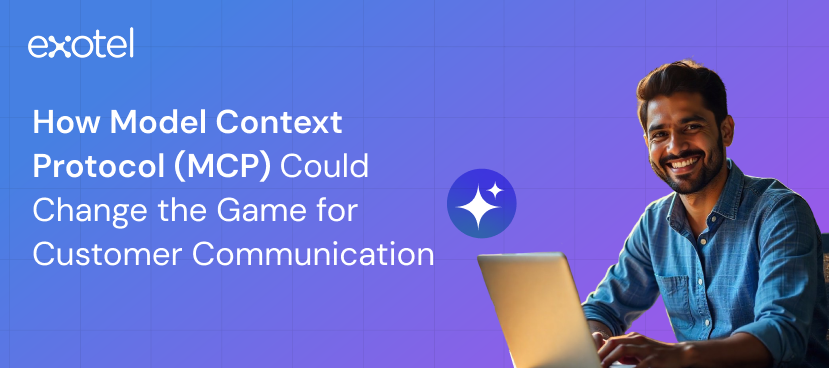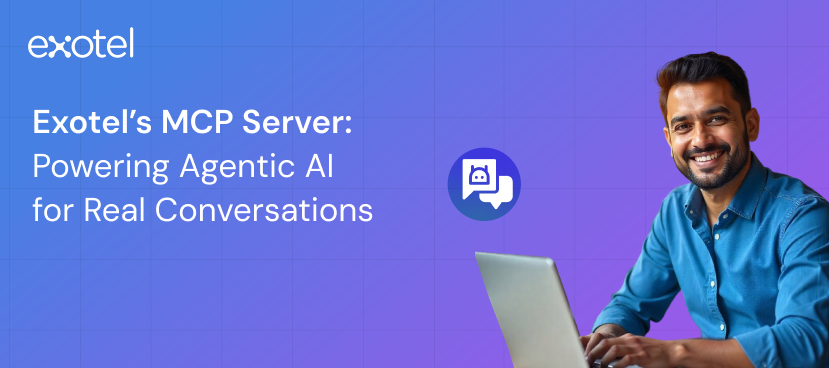The Challenge: Giving AI the Right Context Across Complex Systems
Over the years, companies have invested significant time and resources in developing customer communication platforms and experimenting with AI. Many already have a patchwork of APIs tying their systems together.
But there’s a bigger problem: how do you get an AI agent to actually “understand” and work across all these systems, with complete, accurate context?
Right now, the hurdles are familiar:
- Every new data source needs its custom AI integration.
- AI agents lose context when switching between systems.
- Real-time analysis across platforms is challenging to implement.
- Capabilities vary wildly between communication channels.
In short, you can have the integrations, but getting AI to work intelligently across them is still messy, expensive, and slow.
Understanding Model Context Protocol (MCP)
Model Context Protocol (MCP) functions like a universal adapter for AI systems, a standardised interface that enables AI models to connect seamlessly with any data source or application. Released by Anthropic in November 2024, MCP creates a universal bridge between Large Language Models (LLMs) and enterprise systems.
MCP addresses the exponential integration problem that has complicated AI deployment: the need to build custom connectors between every AI model and every data source. Instead of creating dozens of point-to-point integrations, MCP provides a single, consistent interface that works across platforms.
MCP vs Other AI Communication Protocols
While several protocols exist for AI system communication, MCP offers distinct advantages:
Model Context Protocol (MCP):
- Centralised system for structured message exchange
- Highly structured with well-defined interfaces
- Low learning curve for implementation
- Scalable with clear peer-to-peer capabilities
Agent-to-Agent (A2A) Protocols:
- Decentralised peer-to-peer messaging with flexible schema
- Loosely defined structure, dependent on schema design
- Variable tooling support and scalability challenges
Agent Coordination Protocol (ACP):
- High-level coordination with dynamic adaptability
- Emerging technology with context-aware capabilities
- Self-adaptive via negotiation, but still developing
Why MCP Stands Out:
| Feature | MCP Advantage |
| Structure & Formality | Highly structured interfaces reduce integration complexity |
| Learning Curve | Low barrier to entry for developers and organisations |
| Error Handling | Scalable peer-to-peer architecture with robust error management |
| Scalability | Well-defined interfaces ensure consistent performance as systems grow |
Comparing AI Integration Approaches
| Aspect | Traditional Custom APIs | A2A Protocols | MCP Implementation |
| AI Setup Time | Weeks to months per system | Variable, schema-dependent | Days to weeks total |
| AI Maintenance | Per-integration basis | Dependent on peer schemas | Centralized management |
| Protocol Structure | Varies by implementation | Loosely defined | Highly structured |
| Cross-System AI Analysis | Complex custom development | Flexible but inconsistent | Built-in standardised capability |
| AI Scalability | Linear complexity growth | Schema-dependent scaling | Well-defined interface scaling |
| Error Handling | Implementation-specific | Peer-to-peer variability | Scalable peer-to-peer architecture |
| Learning Curve | High for each integration | Low but variable outcomes | Low with consistent results |
The Integration Gap MCP Bridges
Without MCP:
- AIModel→CustomIntegrationA→VoicePlatform
- AIModel→CustomIntegrationB→CRM
- AIModel→CustomIntegrationC→Ticketing
- AIModel→CustomIntegrationD→Email
With MCP:
- AnyAIModel→MCP→AllConnectedSystems
It works across voice, messaging, CRM, analytics, IoT devices, and more, without starting from scratch every time.
Who’s Already Using It?
- Anthropic: connecting Claude to external tools securely.
- Microsoft: added MCP into Copilot Studio for enterprise deployments.
- OpenAI: built MCP support into their Agents SDK.
Momentum is building. In enterprise AI, MCP is on track to become part of the “default stack.”
Why This Matters for Customer Communication
When your AI can access customer data across every system, you can:
- Preserve context end-to-end — no more broken handovers.
- Make smarter routing decisions — sentiment + history + preferences in real time.
- Automate across silos — trigger workflows in multiple systems at once.
- Stay compliant — standardised audit trails, privacy controls, and security policies.
Before vs After MCP
Before MCP
- Agents rely on siloed dashboards.
- AI gives partial answers based on whatever data it can see.
- Complex insights require manual cross-checking.
After MCP
- Same dashboard, but AI feeds it with cross-system intelligence.
- Recommendations, automations, and next steps appear instantly.
- Customer experience feels seamless because the AI has the whole picture.
Rolling It Out
- Set up MCP Server – Connect your APIs and databases to MCP’s format.
- Link Your AI Platform – Whether it’s Claude, ChatGPT, or another, enable it to discover tools via MCP.
- Set Permissions – Control exactly what the AI can access and act on.
- Enable Real-Time Streams(optional) – For scenarios like live call transcription or monitoring.
The Road Ahead
Over the next year, expect to see:
- Industry-specific MCP toolkits (banking, healthcare, retail)
- Wider support across AI platforms
- Low-code MCP builders for faster adoption
- Stronger security and compliance baked in
Just as HTTPS became the norm for secure browsing, MCP could well become the standard for AI-to-system communication.
Getting Started
Key resources for learning more about MCP:
- Anthropic’s MCP Specification
- MCP GitHub Repository
- OpenAI Agents SDK Documentation
- Microsoft Copilot Studio Integration Guide
The Takeaway
If you already have APIs linking your systems, MCP isn’t asking you to rebuild them. It’s giving you a way to supercharge them, turning static integrations into dynamic, context-aware AI capabilities.
The companies that adopt early will be the ones whose AI agents don’t just respond, they understand.




